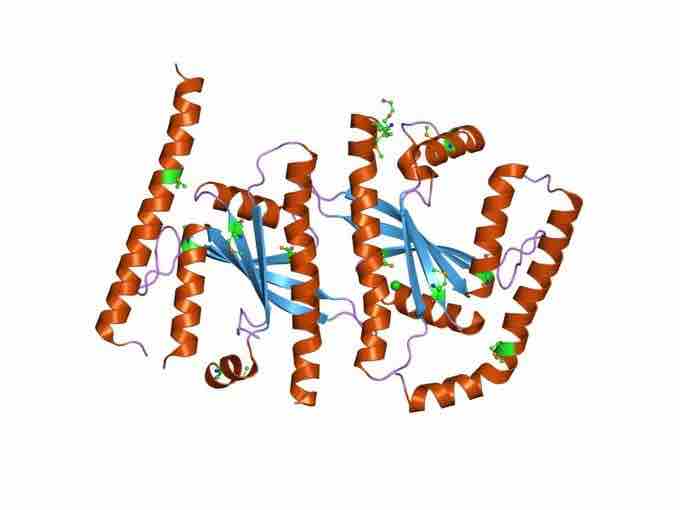Stringent Response, also called stringent control, is a stress response that occurs in bacteria and plant chloroplasts in reaction to amino-acid starvation, fatty acid limitation, iron limitation, heat shock, and other stress conditions. The stringent response is signaled by the alarmone (p)ppGpp and modulating transcription of up to 1/3 of all genes in the cell. This in turn causes the cell to divert resources away from growth and division and toward amino acid synthesis in order to promote survival until nutrient conditions improve.
In Escherichia coli, (p)ppGpp production is mediated by the ribosomal protein L11 and the ribosome-associated protein RelA with the A-site bound deacylated tRNA being the ultimate inducer. RelA converts GTP and ATP into pppGpp by adding the pyrophosphate from ATP onto the 3' carbon of the ribose in GTP, releasing AMP . pppGpp is converted to ppGpp by the gpp gene product, releasing Pi . ppGpp is converted to GDP by the spoT gene product, releasing pyrophosphate ( PPi ). GDP is converted to GTP by the ndk gene product. Nucleoside triphosphate (NTP) provides the Pi, and is converted to Nucleoside diphosphate (NDP).
In other bacteria, stringent response is mediated by a variety of RelA/SpoT Homologue (RSH) proteins. Some of these proteins activate synthetically, hydrolytically, or both (Rel) . The disabling of the stringent response by distruption of relA and spoT in Pseudomonas aeruginosa, produced in infectious cells and biofilms characterized by nutrient limitation, causes greater susceptibility to antibiotics.

RelA/ SpoT protein homologue
In bacteria stringent response is mediated by a variety of RelA/SpoT Homologue (RSH) proteins.
During the stringent response, (p)ppGpp accumulation affects the resource-consuming cell processes replication, transcription, and translation. (p)ppGpp is thought to bind RNA polymerase and alter the transcriptional profile, decreasing the synthesis of translational machinery (such as rRNA and tRNA), and increasing the transcription of biosynthetic genes. Additionally, the initiation of new rounds of replication is inhibited and the cell cycle arrests until nutrient conditions improve. Translational GTPases involved in protein biosynthesis are also affected by ppGpp, with Initiation Factor 2 (IF2) being the main target.